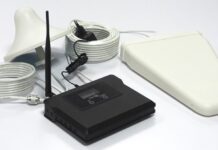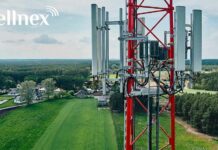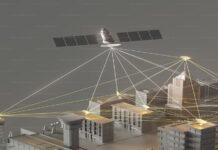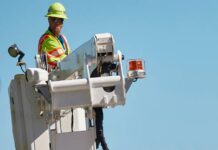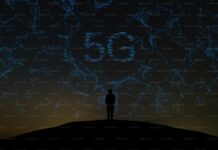Picking the best lights for your home or business can make a big difference. Let’s talk about two popular choices: LED flood lights and LED solar floodlights. Each has its own good things, but knowing how they’re different can help you choose wisely
What is LED Flood lights?
LED floodlights are a type of lighting fixture that uses LEDs ( light-emitting diodes ) to produce a wide beam of light.They are like super bright spotlights that shine a really strong light on a specific area. They can point in any direction you want and can handle any kind of weather. You’ll often see them used in big places like construction sites, stadiums, or parks. Basically, if need to light up a big outdoor space, a LED floodlight is probably option
What is LED Solar Flood lights?
LED solar floodlights is a lighting fixture powered by solar panels. It typically consists of solar panels, LED lights, a circuit controller, and a battery. During the day, the solar panels convert sunlight into electricity, which is stored in the battery. At night, the stored electricity is used to power the LED lights.
LED Flood lights Vs. LED Solar Flood lights
Whether you’re talking about solar-powered LED floodlights or regular LED floodlights, they’re both super popular for lighting up homes and businesses. Each type has its own cool features, so let’s break down what makes them different.
| LED Flood Lights | LED solar Flood light | |
| Lighting source | LEDs | LEDs |
| Lighting Efficiency | 80LM-150LM | 130LM-200LM |
| Luminous stability | Steady and unchanging | Decrease |
| Power watt | 10W -1000W | 1W-100W |
| Housing | ALUMINUM | ALUMINUM / Plastic |
| Power supply | Electricity grid | Sun |
| Battery | NO | YES |
| Electricity Bill | High | Zero |
| Price | Lower | Higher |
| Installation | Easy | Easy |
| Lifetime | 5-10years | 3-10years |
Lighting Source:
Both types of floodlights use LEDs as their light source, which offer energy efficiency and long lifespan.
Lighting Efficiency:
LED floodlights: Typically have a lighting efficiency ranging from 80 to 150 lumen s per watt.
LED solar floodlights: Generally have a higher lighting efficiency, ranging from 130 to 200 lumen s per watt. This means they produce more light for the same amount of energy consumed.
Luminous stability
LED floodlights: LED floodlights connected to a stable power grid generally offer more consistent brightness, as the power supply is relatively constant for daily lighting .
LED solar floodlights: The brightness of solar floodlights can fluctuate depending on factors such as weather conditions (cloud cover, sunlight intensity), battery charge level, Even when the battery of a solar floodlight is fully charged, the lighting brightness may decrease during use due to the decreasing battery voltage, This is due to the nature of solar light fixtures,can not change
Power Watt:
LED floodlights: Can range from 10 watts to 1000 watts, This means that LED floodlights have a wider range of applications, especially in large plazas, large billboards, or areas that require high-intensity lighting from elevated positions.
LED solar floodlights: Typically have a lower power output, ranging from 1 watt to 100 watts, due to the limitations of solar power.Please note that the 1W to 100W power I mentioned refers to the actual power output of the solar light fixture during illumination, not the thousands of watts indicated on the power label of most solar floodlights currently on the market
Battery
LED floodlights: LED floodlights rely on traditional power supply and do not require batteries
LED solar floodlights: LED solar floodlights need to be equipped with batteries of sufficient capacity to ensure their relative brightness, but a larger battery capacity means a larger solar panel is required, which in turn leads to higher costs
Housing:
LED floodlights: To ensure full-power output, LED floodlights require efficient heat dissipation. Die-cast aluminum housings are commonly used to prevent premature lumen decay and maintain high lighting efficiency
LED solar floodlights: Small LED solar floodlights typically have low wattage and thus lower heat dissipation needs. While both die-cast aluminum and plastic housings are used, the former is generally more expensive due to higher manufacturing costs, though both offer waterproof features
Power Supply:
LED floodlights: Rely on traditional electricity grids for power. They require a direct connection to a power outlet.
LED solar floodlights: Harness the energy from the sun using solar panels. They are self-sufficient and do not need to be connected to the electrical grid.
Electricity Bill:
LED floodlights: Contribute to your monthly electricity bill, especially for higher-wattage models.
LED solar floodlights: Do not contribute to your electricity bill, providing significant cost savings over time.
Price:
LED floodlights price: Often have a lower initial purchase cost.
LED solar floodlights price: Typically have a higher upfront cost due to the inclusion of solar panels and batteries.
Installation:
LED floodlights: Require electrical wiring and installation by a qualified electrician.
LED solar floodlights: Generally easier to install as they only need to be mounted in a sunny location.
Lifetime:
LED floodlights: Typically have a lifespan of 5-10 years.Over time, components like LEDs and drivers can degrade, leading to a slight decrease in brightness. However, this is usually a gradual process.
LED solar floodlights: Also have a lifespan of 3-10 years, but factors like battery quality and environmental conditions can affect their longevity.Over time, the efficiency of solar panels may decrease and the battery cycle count gradually decreases, the light fixture’s luminous efficacy and working time will become shorter and shorte
Choosing Between LED Solar Flood lights and LED Flood lights
For homes: Solar LED floodlights: they are often the more economical and sustainable choice,They require no wiring and offer long-term savings on electricity bills. However, initial costs might be higher,
LED Floodlights: they are suitable for those who prioritize consistent brightness and are willing to invest in professional installation and ongoing electricity costs.
For Industrial Projects:
LED Floodlights: Often preferred for large-scale industrial projects that demand consistent, high-intensity lighting. They offer reliable performance but come with higher energy consumption.
Solar LED Floodlights: Can be a viable option for remote industrial sites where grid power is limited. However, their performance might be affected by weather conditions and may not be sufficient for all industrial applications
For Business Sales:
Both Options: Businesses can benefit from offering both types of floodlights to cater to a wider range of customer needs. Solar LED floodlights appeal to environmentally conscious customers, while LED floodlights are suitable for those who prioritize performance.
In summary
I hope this article has clarified the key distinctions between solar and LED floodlights. Both have their place, whether it’s in your home, an industrial setting, or your lighting business. For more in-depth information, check out reputable brands like OPPLE,NVC,PHILIPS,FSL GILLSON. Those brands Lighting are industry leaders.LED solar floodlights offer several advantages over traditional LED floodlights, including energy efficiency, reduced electricity costs, and environmental friendliness. However, they often come with a higher initial investment. The best choice for you will depend on your specific needs and budget.



